 Be Inspired Blog - Arizona
Be Inspired Blog - Arizona
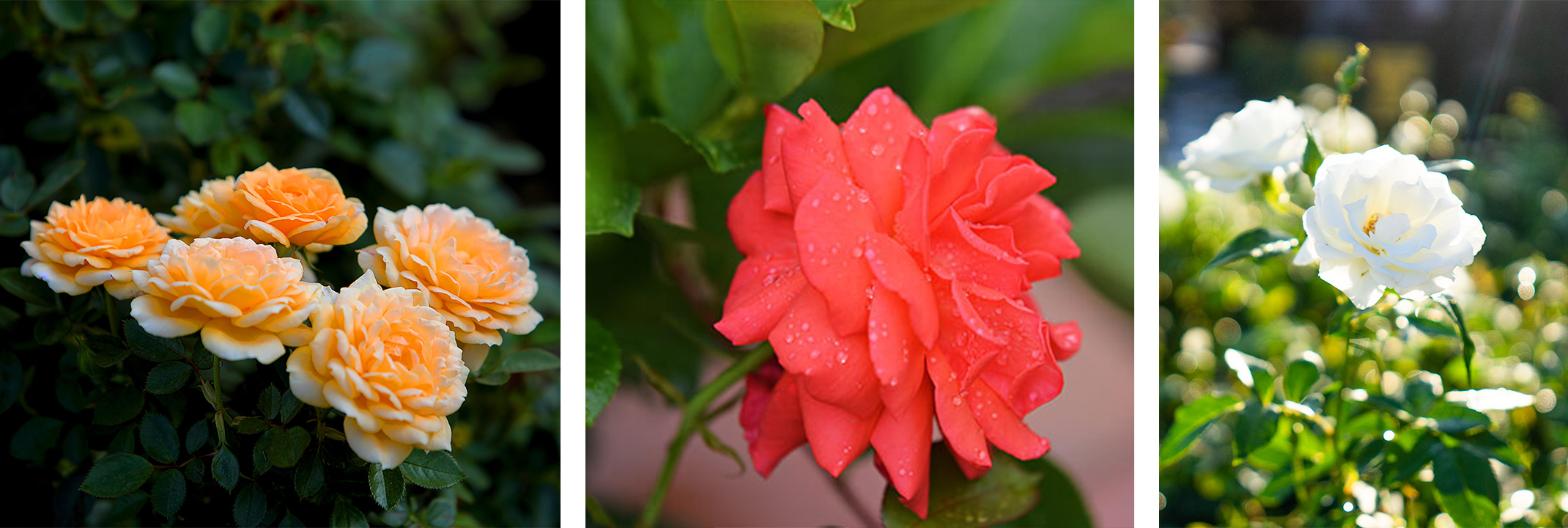
Growing Beautiful Roses: A Guide to Planting Hybrid, Floribunda, and Grandiflora Roses
Even in our seasonally hot and dry climate, roses are still a favorite flower that many in the valley enjoy. Keep reading to learn the differences between three different types of roses—hybrid, floribunda, and grandiflora— and discover how to successfully plant and grow gorgeous roses in your desert garden!
Hybrid Roses
Hybrid roses are a broad category that includes various rose types resulting from the crossbreeding of different rose species or varieties. They often exhibit a wide range of characteristics, making them versatile in terms of flower form, fragrance, and growth habits. Hybrid roses are prized for their beauty and are often used as specimen plants in gardens.
Hybrid Tea Roses
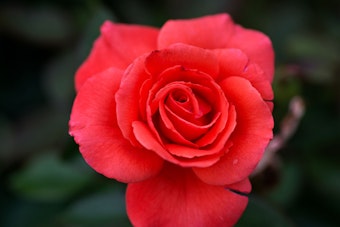 Hybrid tea roses are popular for their elegant, high-centered blooms and long stems, making them excellent for cutting and arrangements.
Hybrid tea roses are popular for their elegant, high-centered blooms and long stems, making them excellent for cutting and arrangements.
- Bloom Characteristics: Hybrid tea roses typically produce single, high-centered blooms on long, slender stems. These blooms are known for their classic rose shape, with a pointed center and gently spiraling petals.
- Color Variety: Hybrid tea roses come in a wide range of colors, including red, pink, yellow, white, and even bi-color varieties. They are often chosen for their vibrant and eye-catching hues.
- Fragrance: Many hybrid tea roses are prized for their delightful fragrance, which can vary from mild to strong, depending on the specific cultivar.
Floribunda Roses
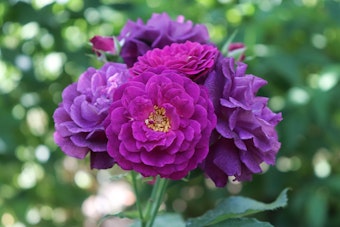 Floribunda roses are a distinct rose class known for their prolific bloom clusters and compact growth habits. They are the result of crossing hybrid tea roses with polyantha roses, creating bushes that are generally shorter and bushier compared to hybrid teas.
Floribunda roses are a distinct rose class known for their prolific bloom clusters and compact growth habits. They are the result of crossing hybrid tea roses with polyantha roses, creating bushes that are generally shorter and bushier compared to hybrid teas.
- Bloom Characteristics:
- Floribunda roses are known for their clusters of smaller, often 2-3 inch, blooms that appear in profusion throughout the growing season.
- These blooms come in various colors, including shades of pink, red, yellow, and white.
- Growth Habit:
- Floribunda rose bushes have a more compact growth habit compared to hybrid tea or grandiflora roses, typically reaching a height of 2 to 4 feet.
- Their bushy and compact nature makes them well-suited for mass plantings, border edging, or as low hedges.
Grandiflora Roses
 Grandiflora roses emerged as a rose class in the mid-20th century as a hybrid between hybrid tea roses and floribunda roses. They are known for their large, showy blooms and are often considered a good choice for gardens due to their striking appearance.
Grandiflora roses emerged as a rose class in the mid-20th century as a hybrid between hybrid tea roses and floribunda roses. They are known for their large, showy blooms and are often considered a good choice for gardens due to their striking appearance.
- Bloom Characteristics:
- Grandiflora roses are recognized for their large, high-centered showy blooms that can be solitary or in clusters.
- These blooms come in various colors, similar to hybrid tea roses, offering a wide range of choices for gardeners.
- Growth Habit:
- Grandiflora rose bushes typically have a tall, upright growth habit, and they can range in height from 3 to 6 feet or more.
- Their stature makes them ideal for use as specimen plants or as background plants in a garden.
Tips for Growing Roses in Arizona
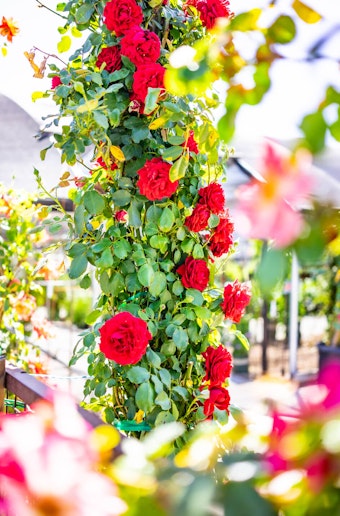
- Choose the Right Rose Varieties: Opt for heat-tolerant rose varieties that are known to perform well in hot climates. Your local SummerWinds Nursery carries a variety of roses that will grow well in our area with the proper care.
- Location & Sun Exposure: Roses need at least 6-8 hours of direct sunlight daily. Choose an area that receives morning sun and afternoon shade to best protect your roses from the most intense sunlight. Too much Arizona sun can lead to sunburn on the plant's leaves or flowers. Use a shade cloth during the hottest part of the day to help mitigate this issue and protect your roses.
- Soil Preparation: Ensuring good drainage is crucial for healthy roses. Amend your soil with organic matter like compost to improve water retention and soil quality. Aim for a slightly acidic to neutral pH level (around 6.0 to 7.0). You can also plant your roses in soil specfically designed with their needs in mind, like E.B. Stone Organics Rose & Flower Potting or Planting Mix.
- Planting: Plant roses in the fall, winter or early spring when the weather is cooler.
- Watering: Use drip irrigation to effectively deliver water directly to the root zone. Water early in the morning to allow foliage to dry before the heat of the day. Water deeply and consistently to establish strong roots, especially during the hot months. Roses grow best with consistent moisture, and this can be challenging in a desert environment with low humidity. Frequent watering may be necessary to keep the soil consistently moist but not waterlogged. Avoid wetting the foliage to prevent fungal diseases.
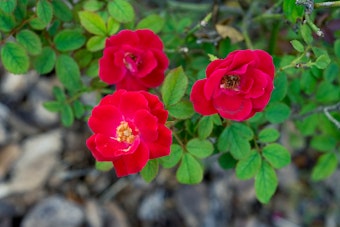 Mulch: Apply a 2-3 inch layer of organic mulch around the base of the rose bush to help retain moisture, regulate soil temperature, and reduce weed competition.
Mulch: Apply a 2-3 inch layer of organic mulch around the base of the rose bush to help retain moisture, regulate soil temperature, and reduce weed competition.- Protection from Extreme Heat: The scorching summer temperatures in the valley can be challenging for roses, as they typically prefer cooler conditions. To help relieve stress from the heat, we recommend using shade cloth or providing temporary shade during the hottest part of the day to protect your roses from excessive heat.
- Pruning: Prune your roses in late winter or early spring to remove dead or diseased wood and shape the bushes. Deadhead spent blooms to encourage new growth and additional blooms. Pruning can also help improve air circulation and reduce the risk of fungal diseases.
- Disease and Pest Control: Keep a close eye on your roses for signs of pests like aphids and spider mites, as well as fungal diseases like black spot or powdery mildew. Promptly treat them with products such as, Bonide Rose Rx® 3-in-1, Bonide Tomato & Vegetable Ready to Use, insecticidal soap or neem oil as needed.
- Fertilizing: Use a balanced rose fertilizer, such as E.B. Stone Organics Rose & Flower Food, according to the package instructions to provide essential nutrients. Fertilize in early spring, after the first bloom cycle, and again in late summer.
- Winter Protection: While winters are generally mild in Phoenix, protect your roses during occasional frost events with frost cloth or by covering them with a blanket.
Remember that proper care is essential for the health and longevity of your rose bushes. Regular maintenance and attention to the specific needs of your roses will help them thrive in our dersert environment.
At SummerWinds, We Guarantee Success!

